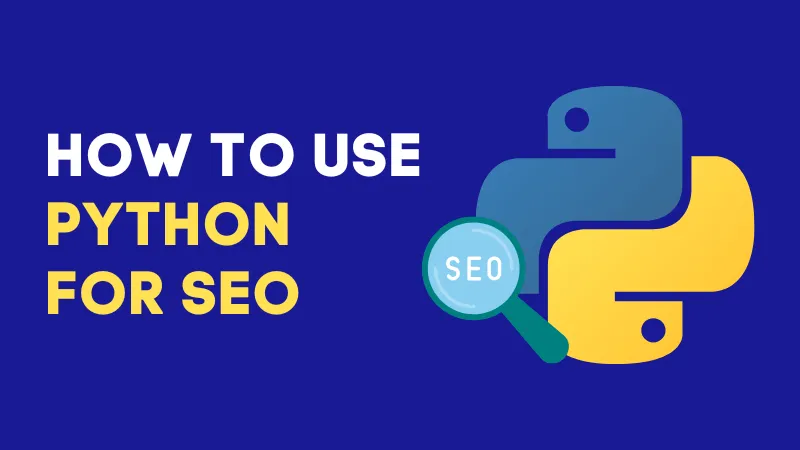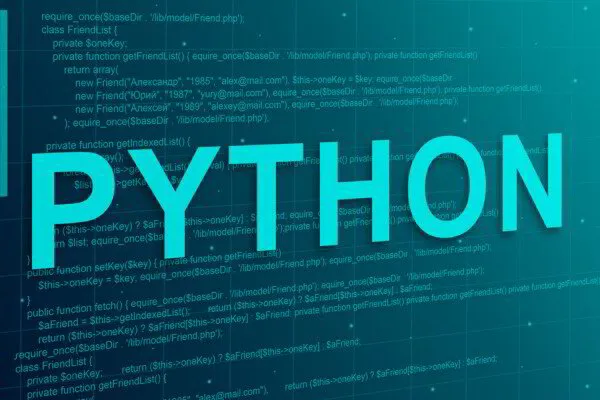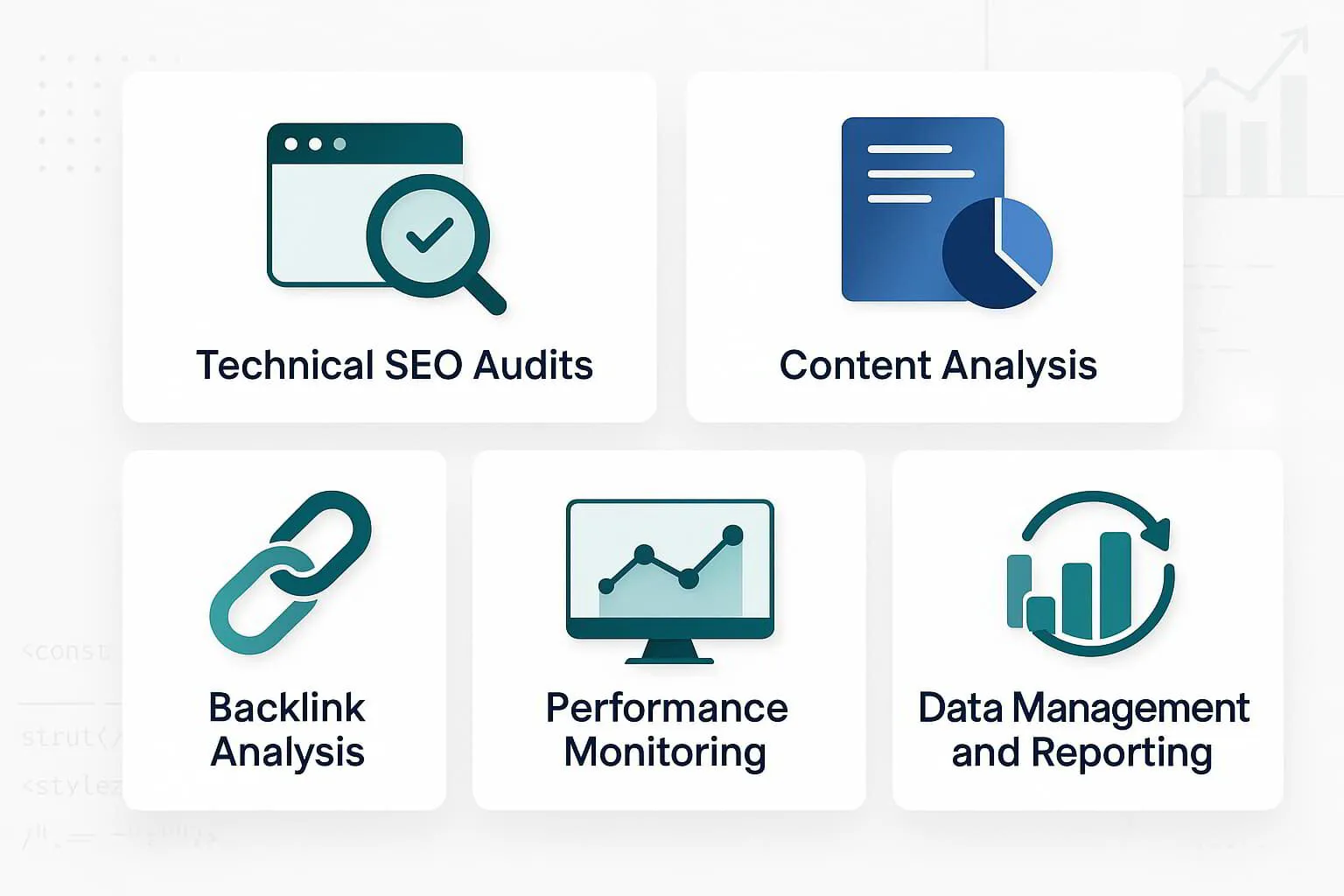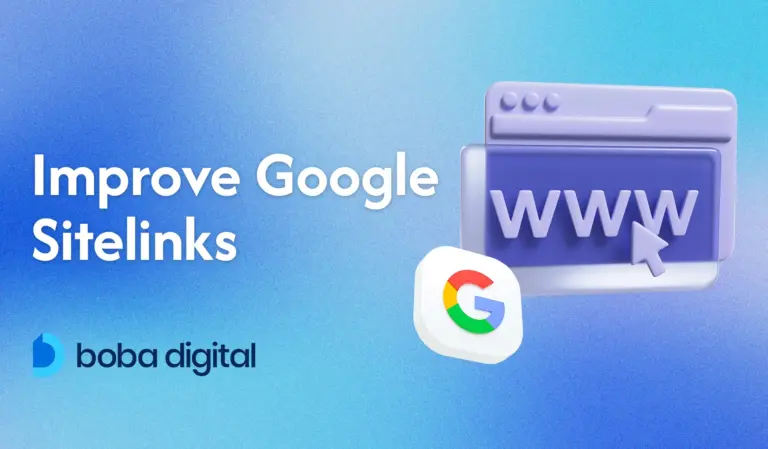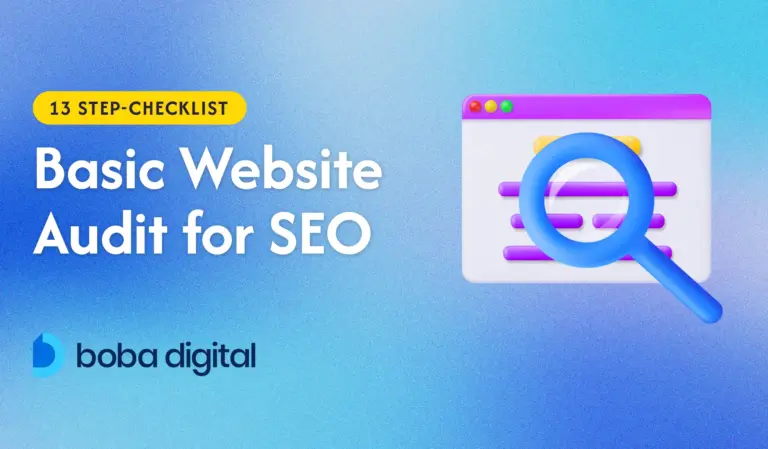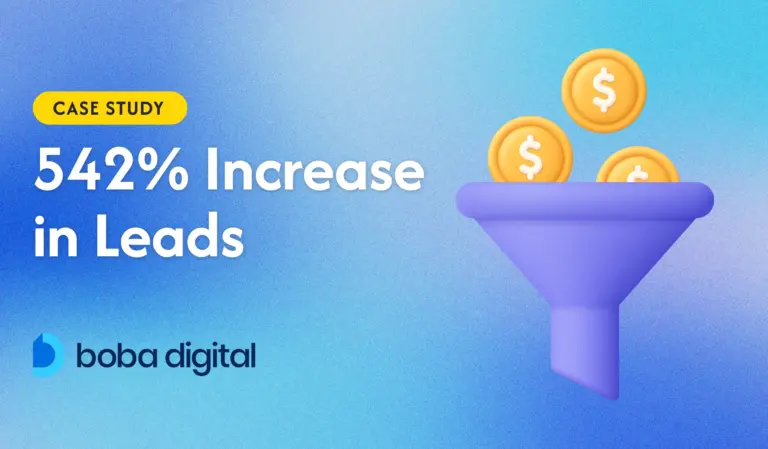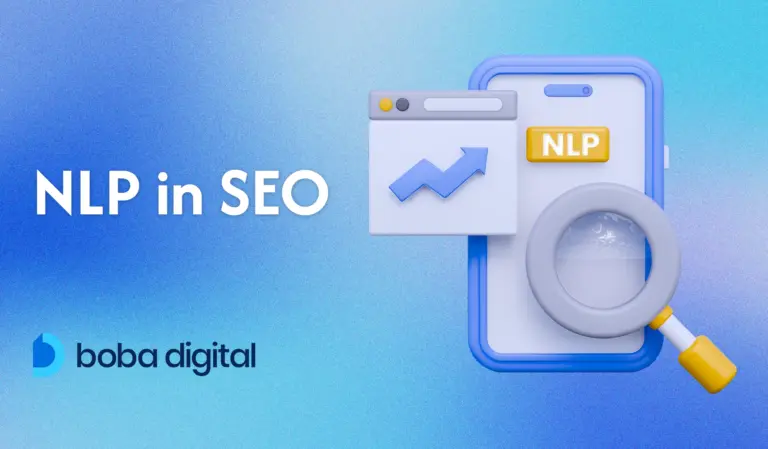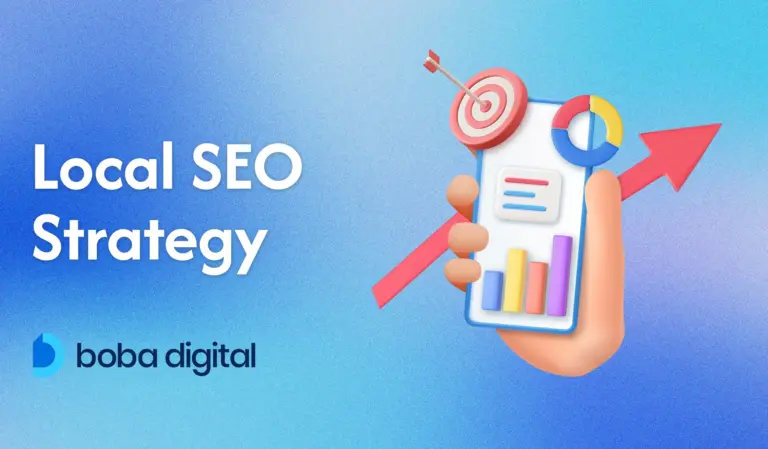How to Use Python for SEO: Skyrocket Rankings in 2025
Ever wish you could clone yourself just to keep up with SEO tasks? Between keyword research, tracking rankings, updating meta tags, and checking broken links, it’s a lot. Now imagine handing over the repetitive stuff to a quiet, lightning-fast assistant who never complains—meet Python.
While most SEO professionals are busy juggling tools and spreadsheets, those who dabble in Python programming are quietly automating their entire SEO process. From pulling keyword data to auditing web pages at scale, Python is changing how smart SEOs work—especially when dealing with large websites or technical SEO issues.
You don’t need to be a data scientist or a web development expert to get started. Even basic Python skills can help you automate repetitive SEO tasks and gain insights faster than you can say “search engine rankings.”
So what can Python really do for your SEO strategy? Stick around—we’re just getting warmed up.
Can We Use Python for SEO?
Absolutely, Python can be a game-changer for Search engine optimization.
From streamlining technical audits to building custom data pipelines, Python is widely used by SEO specialists to automate the grind and dive deeper into data.
Whether you’re pulling search volume from a keyword database or checking status codes across a sitemap, Python scripts can handle it all—without needing to open a dozen browser tabs.
What makes Python especially appealing is its simplicity and flexibility.
It’s open-source, so you’re not tied to expensive software, and the ecosystem is massive—think libraries like BeautifulSoup for web scraping or the Requests library to pull data from a specified URL.
Even better, you don’t need a PhD in computer science to use it.
Many SEO tasks only require a basic understanding of Python programming language, and the internet is packed with beginner-friendly resources, guides, and forums to help you get started.
Because Python plays well with APIs—like Google Search Console, Google Analytics, and even OpenAI—it fits right into your existing SEO stack.
Need to extract keyword data for a given page or automate checks for broken links across thousands of URLs? There’s a Python solution for that.
For modern SEO professionals looking to move beyond spreadsheets and manual reporting, Python offers a vast array of tools to gain insights, automate repetitive SEO tasks, and boost overall SEO performance.
Benefits of Using Python for SEO
Automation of repetitive tasks
Let’s be honest—some parts of SEO feel like digital laundry. You do them over and over again, knowing full well they’ll be back tomorrow.
That’s where Python steps in—not just as a helper, but as your very own automation assistant with zero complaints and 24/7 availability.
Imagine running a full SEO audit without lifting a finger. Python scripts can crawl through thousands of web pages, check for broken links, scan meta tags, and even generate meta descriptions based on page content.
Tasks that usually eat up your time (and patience) can now run quietly in the background, saving you hours every week.
The best part?
Python doesn’t just move faster—it makes fewer mistakes.
When you automate repetitive SEO tasks like pulling keyword data, checking status codes, or generating performance reports, you reduce human error and create consistency across your SEO efforts.
Let’s say you want to keep an eye on Google Search Console data. Instead of downloading it manually every other day, a script can back it up in a CSV file or text file, schedule it weekly, and even send it to your inbox.
Need to send a report to your team on Friday? Python can do that, too.
You can also automate more technical SEO tasks—like flagging missing title tags, tracking page speed across your site, or grouping keywords based on search intent.
Tools like the Requests library and the BeautifulSoup library let you extract and manipulate data quickly, especially when dealing with large websites.
At the end of the day, learning Python basics opens the door to automating countless SEO tasks. You’ll spend less time on grunt work and more time improving your SEO strategy.
Handling and Analyzing Large Datasets Efficiently
If you’ve ever tried opening a massive keyword file in Excel and watched your screen freeze like it just saw a ghost—you’re not alone.
SEO work generates a staggering amount of data, and traditional tools quickly tap out. That’s where Python steps up and takes control of the chaos.
Python isn’t just good at handling data—it thrives on it.
Whether you’re digging through massive keyword lists, analyzing backlink profiles, or parsing Google Analytics data, Python can crunch it all with speed and precision. It turns what would be spreadsheet nightmares into clean, structured insights.
Libraries like Pandas and NumPy are your secret weapons. With Pandas, you can sort, filter, and analyze keyword data to uncover hidden gems with high search volume and low competition.
Blend that with your SEO performance data, and you’re not just guessing—you’re making decisions backed by numbers.
Then there’s NumPy, perfect for handling numerical SEO data and prepping it for visualization. Paired with Matplotlib or Seaborn, you can turn raw CSV files into smart graphs and trend lines that show how your SEO strategy is performing over time.
Want to know how your keyword rankings evolved after a Google update? Python makes that easy to track visually—no manual chart-building needed.
By combining multiple SEO datasets—like click-through rates, page speed, and keyword movement—Python lets you gain insights that spreadsheets alone could never surface.
For SEO professionals working with large websites or deep campaigns, this isn’t just convenient; it’s a competitive edge.
Integration with APIs and Third-Party SEO Tools
Let’s face it—manually logging into a dozen SEO platforms just to pull the same data every week feels like the digital version of groundhog day.
Thankfully, Python doesn’t just eliminate the busywork—it connects directly to the source, turning you into the puppet master of your SEO tools.
With Python, you can tap into the power of APIs from platforms like Google Search Console, SEMrush, Ahrefs, Screaming Frog, and more.
Instead of downloading reports and copying them into spreadsheets, you can use Python scripts to fetch real-time SEO data from multiple sources and automatically compile it into one clean, digestible report.
For instance, a script using the Google Search Console API can pull performance data for a specified URL—think clicks, impressions, and average position—without ever opening your browser. Combine that with keyword data from SEMrush or Ahrefs, and you’re looking at a complete SEO snapshot, updated as often as you need.
Now, these tools don’t always come cheap. Ahrefs’ API plans can run upwards of $500 per month, and SEMrush starts at around $139.95/month.
But here’s the upside: Python lets you squeeze every last drop of value from those subscriptions. Rather than using those platforms just for dashboards, you can extract custom data, automate analysis, and even build tailored SEO dashboards on platforms like Google Colab.
If you’re on a tighter budget, Python also opens the door to lower-cost or free alternatives. With the Requests library and a bit of web scraping (where allowed), you can still collect meaningful SEO data without breaking the bank.
Python turns data collection into a background process, freeing up your time to actually think—plan strategies, fine-tune content, and improve SEO where it really counts.
Customization and Scalability for Unique SEO Challenges
Every website has its quirks—broken navigation, slow-loading pages, duplicate content hiding in obscure folders—and one-size-fits-all tools often miss the mark.
That’s where Python comes in, not just as a tool, but as a toolkit that adapts to whatever SEO challenge you’re facing.
Let’s say your client’s site has tens of thousands of product pages, each needing a custom meta description check and status code validation. Instead of relying on generic SEO software, you can build a custom Python script that crawls only the pages you care about, flags issues, and compiles everything into a tailored report.
No unnecessary noise—just the insights you actually need.
Need to monitor your competitors’ keyword movement? Or compare how two domains perform for the same cluster of terms? With Python, you can track that data on your terms, using the exact metrics that matter most to your SEO strategy.
You can even pull in information from multiple APIs, analyze search engine rankings, and generate performance visuals with just a few lines of code.
And Python doesn’t stop at solving today’s problems—it grows with you.
Scripts built for a 100-page site can be scaled to monitor performance across multiple enterprise-level domains.
With Python’s ability to handle vast datasets and crunch numbers efficiently, you can easily group keywords, track SEO performance, and identify patterns that would be impossible to see in a spreadsheet.
Whether you’re auditing a single blog or managing SEO for a global network of websites, Python makes it easy to scale your workflow without reinventing the wheel every time.
The only limit is what you want to automate next.
Core SEO Tasks You Can Automate with Python
Technical SEO audits
Technical SEO audits often feel like digital detective work—tedious, repetitive, and easy to get lost in. Running through hundreds of pages to find broken links, missing title tags, or redirect loops can drain both your time and patience.
Python offers a smarter approach by handling these tasks automatically, giving you results in a fraction of the time.
Python scripts can scan websites for broken links, detect duplicate content, validate meta tags, and even map out your entire site structure.
With the right setup, it becomes possible to schedule regular audits that quietly run in the background, flagging issues before they impact search engine rankings or user experience.
Using tools like Screaming Frog through its API takes this a step further.
When paired with Python, Screaming Frog (license starts at $259/year) can perform deeper crawls, deliver structured SEO data, and uncover problems across large websites with ease.
No need to click through reports manually—Python pulls exactly what you need and turns it into actionable insights.
Automated technical audits not only reduce the risk of overlooking issues but also help maintain SEO performance across constantly changing websites.
As your site evolves, Python ensures your audits scale with it—without missing a beat.
Content Analysis
Content may be king, but without the right data behind it, it’s ruling blind. Python makes content analysis sharper, faster, and smarter by turning raw text into actionable SEO insights.
Python scripts can break down your pages word by word—literally.
Using libraries like NLTK (Natural Language Toolkit), you can run keyword density checks to make sure your content isn’t overstuffed or under-optimized.
It goes beyond just counting words, too. With built-in functions for stemming, lemmatization, and part-of-speech tagging, NLTK helps you understand the structure and intent of your content, not just its surface.
When it’s time to get more precise, spaCy steps in.
Known for its speed and accuracy, spaCy is ideal for semantic entity extraction and contextual keyword grouping. It can help identify what Google might consider relevant to your page, allowing you to shape content around those terms in a natural way.
That’s where real content optimization starts—using machine learning to match intent and depth.
Content gap analysis becomes much more efficient when Python is used to scrape competitor pages.
Using the BeautifulSoup library and Requests, you can pull text from top-ranking URLs for a given keyword and analyze what’s missing from your own. It’s like holding up a mirror to your competition—and knowing exactly what to tweak.
Python also lets you automate meta description and title tag creation using NLP models.
Instead of writing them one by one, a script can generate human-like, keyword-optimized snippets based on page content, cutting down hours of manual work while improving on-page SEO.
This approach transforms your content from guesswork into a data-backed asset—one that’s fine-tuned for both search engines and users.
Backlink Analysis
Backlinks are like votes of confidence from the web—but not all votes carry the same weight.
Understanding who’s linking to your site, what pages they’re pointing to, and the quality of those links is essential for improving search engine rankings. Python makes it possible to skip the spreadsheet grind and get straight to the insights.
With the help of APIs from platforms like Ahrefs and SEMrush, you can pull in backlink data and track new or lost links automatically.
Want to know which domains are boosting your authority this month? Or monitor anchor text trends across your profile? Python scripts can do that on autopilot.
Just keep in mind: Ahrefs’ API via RapidAPI starts at $20/month for 1,000 requests, and full access to enterprise-level features comes at a significantly higher cost.
But with Python, you can stretch every request and make the most out of limited credits.
For more flexibility (or when budgets are tight), Python libraries offer plenty of functionality.
The Requests library can fetch link data from public sources, while BeautifulSoup parses HTML to extract backlinks directly from a page’s code. This is particularly helpful for auditing competitor links or monitoring brand mentions.
If a site uses JavaScript to load links dynamically, Selenium steps in to simulate user interaction and grab the data.
Once your data is collected, Pandas helps organize and analyze it—grouping links by domain, filtering by follow/nofollow status, or even checking for link decay.
Want to visualize how your backlink profile changes over time? You can tie in Matplotlib or Seaborn to build graphs that highlight trends at a glance.
Backlink analysis becomes less of a burden and more of a strategic advantage when powered by Python.
With automation in place, you’re not just tracking links—you’re building a smarter off-page SEO strategy.
Performance Monitoring
Even the most beautiful website can quietly lose traffic if it starts loading too slowly or piling up crawl errors behind the scenes.
Staying on top of performance metrics is crucial—but checking them manually every day? That’s a fast track to burnout.
Python changes the game by giving you a fully automated dashboard for your site’s health.
With the right Python setup, you can tap into the Google Search Console API and Google Analytics API to pull essential data like keyword clicks, crawl stats, indexation status, and bounce rates.
No more hopping between tabs or downloading endless CSV files. Python scripts gather this data and organize it for you—often in real-time.
Site speed is another key ranking factor that Python handles effortlessly.
You can connect to the PageSpeed Insights API and monitor how your pages perform on both mobile and desktop. If load times spike or Core Web Vitals dip, Python can notify you before it impacts your search engine rankings.
For a more hands-off approach, custom alert systems can be set up to flag performance drops, indexing issues, or traffic anomalies.
If a key page suddenly disappears from the index or page speed takes a hit, your Python script can shoot you a message—so you’re always one step ahead.
Monitoring SEO performance isn’t just about collecting numbers—it’s about acting on them. With Python, you have the power to spot problems early, respond faster, and improve SEO performance with fewer headaches.
Data Management and Reporting
Gathering SEO data is only half the battle—the real challenge is turning it into something useful.
Jumping between platforms, cleaning up messy exports, and manually updating reports can drain hours from your week. Python makes it possible to collect, clean, and present SEO data in one smooth, automated process.
Instead of juggling multiple tabs and copying figures from Google Analytics, Search Console, or keyword tools, Python scripts can fetch everything at once.
You can pull search performance, page speed metrics, backlink stats, and keyword rankings—then merge them into a unified dataset for clearer analysis.
Cleaning up that data is just as important.
Python can remove duplicates, fix formatting issues, fill in missing fields, and even normalize keyword variations.
Once the data is ready, you can export it to Excel, generate a polished PDF report, or feed it directly into a Looker Studio dashboard or Google Sheets—all with just a few lines of code.
The result?
Reports that are not only more accurate, but also generated in minutes instead of hours. This saves valuable time while reducing the risk of manual error, especially when handling data across multiple campaigns or clients.
Whether you’re prepping weekly reports or building an ongoing SEO strategy dashboard, Python transforms reporting from a chore into a streamlined, intelligent process—letting you spend more time acting on insights instead of chasing them down.
Step-by-Step: Getting Started with Python for SEO
Getting into Python might sound like stepping into a developer’s world—but truthfully, it’s more like unlocking a hidden shortcut for your SEO workflow.
With just a few tools and a browser tab, you’ll be writing your first automation script faster than you think.
Installing Python and Essential Libraries
First things first: install Python.
It’s completely free, open-source, and works on Windows, macOS, or Linux. Once it’s set up, all you need is a command line and a package installer like pip to grab the tools you’ll use daily.
Some of the most useful libraries for SEO include:
- requests – For pulling data from websites or APIs
- BeautifulSoup – For parsing and scraping HTML content
- pandas and numpy – For data manipulation and keyword grouping
- matplotlib – For simple visualizations
- selenium – For interacting with JavaScript-heavy pages
Each can be installed with a quick pip install library-name—no advanced setup needed.
Using Google Colab for No-Hassle Coding
If downloading and configuring environments isn’t your thing, Google Colab is your best friend.
It’s a free, cloud-based tool that lets you run Python scripts directly from your browser. You don’t need to install anything—just log in, create a new notebook, and start coding.
It’s especially handy for SEO professionals who want to test scripts or collaborate on projects without worrying about device compatibility or local setup.
Beginner-Friendly SEO Scripts
Getting started doesn’t require building complex tools from scratch. Here are a few beginner Python scripts that can add instant value to your SEO process:
- Check status codes: Use requests to scan a list of URLs and flag any broken ones.
- Scrape title tags: With BeautifulSoup, extract title tags from multiple web pages for quick audits.
- Extract keywords: Pull visible text from a competitor’s page and identify frequently used terms.
- Basic keyword clustering: Group similar keywords using pandas and simple logic, helping to organize content strategies.
Many of these scripts are shared freely by SEO professionals online. Feel free to explore, test, and tweak them to suit your own needs.
The beauty of Python lies in its flexibility—you’re not locked into any one tool or platform.
Getting started with Python doesn’t require perfection, just curiosity. As your comfort with basic scripts grows, so will the impact on your SEO strategy.
Advanced Python Applications in SEO
Python doesn’t stop at automation—it opens the door to machine learning, allowing SEO professionals to move from reacting to predicting.
When used right, it becomes a smart assistant that helps forecast trends, classify intent, and detect problems before they cost you rankings.
Machine Learning for SEO

With libraries like scikit-learn, you can build models that use historical data to predict SEO performance.
Feeding in traffic logs, keyword rankings, and CTR by position, Python can help forecast future visibility—so you can make data-driven decisions before publishing a single page.
Another powerful use is keyword intent classification and clustering.
Python’s machine learning algorithms group keywords by topic or intent, helping you better understand which ones are worth targeting in blogs, product pages, or landing pages.
You can also apply machine learning to anomaly detection.
Scripts can flag sudden ranking drops, traffic dips, or indexation issues by spotting unusual behavior in SEO data—far faster than you’d catch them manually.
Python, when paired with machine learning, gives SEO professionals the ability to act strategically and stay one step ahead.
Natural Language Processing (NLP)
If SEO is all about matching your content to what users (and search engines) expect, then NLP is the cheat code.
Python gives you access to natural language processing tools that break down how search engines interpret content—letting you optimize beyond keywords and dive into true intent.
With libraries like SpaCy and NLTK, you can analyze your content at a deeper level. NLP makes it possible to extract semantic entities—like names, places, products, or concepts—and compare them to top-performing competitor pages.
This lets you pinpoint missing elements in your content that might be holding back your rankings.
Want to perform a content gap analysis?
A Python script can crawl competitor pages, extract key entities and themes, and cross-check them against your own content. What you get is a clear roadmap of what’s missing—not just in terms of keywords, but context and depth.
NLP can also help tailor your content to better match search intent.
By analyzing sentence structure, tone, and entity relationships, you can reshape content so that it aligns more closely with what users are actually looking for—whether it’s informational, transactional, or navigational in nature.
This isn’t guesswork—it’s applying machine-level analysis to make content more useful, relevant, and optimized for how Google understands language.
Custom API Integrations
Relying on manual exports from SEO tools is like waiting for mail in the age of instant messaging—it works, but it’s painfully slow.
Python lets you skip the delays by tapping directly into SEO platforms through custom API integrations, giving you live access to the data you need, when you need it.
Using Python, you can connect to APIs from tools like Ahrefs, SEMrush, and Screaming Frog to automatically fetch backlink data, keyword rankings, technical audit reports, and more.
These regular data pulls help you stay up to date without logging into each platform or downloading new files every time.
Python scripts can be scheduled to run daily, weekly, or even hourly—keeping your reports current and freeing up time for actual strategy.
Whether you’re tracking ranking shifts or monitoring new referring domains, API integrations make your workflow smoother and faster.
Once the data is pulled, Python doesn’t stop there.
You can push it directly into Google Sheets, feed it into Looker Studio, or build fully custom dashboards using lightweight web frameworks. Real-time visualizations mean your team or clients can view live performance metrics without ever touching raw data.
These integrations aren’t just about convenience—they offer a flexible way to design reporting systems that match your goals, your process, and your metrics.
Tips for Non-Coders and Beginners
Python might seem intimidating at first glance—like it’s reserved for developers in hoodies surrounded by six monitors.
But in reality, it’s one of the most beginner-friendly programming languages out there, especially if you’re looking to enhance your SEO skills without diving headfirst into full-scale software development.
Where to Start (Without Getting Overwhelmed)
Plenty of free platforms make learning Python simple, practical, and even fun. If you’re starting from zero, websites like freeCodeCamp, Sololearn, W3Schools, and LearnPython.org offer structured lessons that walk you through the basics step-by-step.
Prefer watching over reading?
YouTube tutorials break concepts down into short, visual explanations—great for squeezing in a quick lesson over lunch.
Once you’re comfortable with the basics, platforms like Google Colab and Jupyter Notebooks let you write and test Python code directly in your browser.
No messy installation or setup.
You can tweak existing SEO scripts, experiment with real data, and see results instantly—making the learning process hands-on and rewarding.
You don’t need to master complex algorithms or build apps from scratch. Even simple Python skills can drastically cut down on repetitive SEO tasks and unlock smarter, faster decision-making.
Community Support and Where to Find Help
Even the best coders hit roadblocks—and if you’re just starting out with Python for SEO, chances are you’ll have questions.
The good news? You’re not learning alone.
There’s a massive, supportive community of developers, SEOs, and hobbyists who’ve probably run into (and solved) the same problems you’re facing.
If you hit a snag, Stack Overflow is a goldmine for quick answers and coding fixes. For more SEO-specific advice, Reddit communities like r/SEO and r/learnpython are active spaces where users share scripts, ask for feedback, and trade ideas.
Looking for real-world examples?
GitHub hosts a ton of open-source Python SEO scripts that you can study, fork, or adapt to your own projects. From basic URL crawlers to full audit frameworks, many of these tools come with clear instructions and active contributors willing to help.
You’ll also find value in joining SEO forums and Slack groups that focus on technical SEO and automation.
These spaces often include practical tutorials, use-case discussions, and script walkthroughs tailored specifically to SEO professionals.
Being part of these communities speeds up your learning curve, exposes you to creative solutions, and helps you stay up to date with what’s possible in Python-driven SEO.
Conclusion
Mastering SEO doesn’t mean you need to master chaos. With Python, you can simplify the grind, automate the repetitive stuff, and focus on what actually moves the needle. From data analysis to technical audits, Python brings efficiency, accuracy, and a touch of genius to your SEO strategy.
The best part? You don’t have to start big. Tweak a community script, test it in Google Colab, and see what a few lines of code can do. Over time, those “small wins” turn into custom tools that work exactly the way you want them to.
Not into scripting? That’s fine—because great SEO isn’t about the tools, it’s about how you use them. At Boba Digital, we turn insights into action and strategy into rankings. You focus on your business—we’ll handle the SEO that gets results.
Want smarter SEO without the tech headache? Let’s talk.
FAQs
Do I need to be a programmer to use Python for SEO?
Nope. You don’t need a programming degree or years of coding experience to start using Python for SEO. With just the basics of the Python programming language, you can automate repetitive SEO tasks like checking status codes, generating meta descriptions, or grouping keywords by search volume.
What are the best Python libraries for SEO automation?
Several powerful Python libraries can take your SEO strategy to the next level. Requests and BeautifulSoup help with web scraping and crawling web pages. Pandas and NumPy handle data analysis and data manipulation efficiently. For visualizing SEO performance, Matplotlib and Seaborn do the trick. Need to automate technical SEO audits? Selenium interacts with dynamic pages, and SpaCy or NLTK help with semantic entity extraction, keyword clustering, and search engine intent classification. Together, these tools let you improve SEO without relying solely on manual input or expensive software.
How can I use Python to analyze backlinks?
Python makes backlink analysis smarter and faster by using libraries like Requests, BeautifulSoup, and Pandas to pull, parse, and organize link data. You can scrape backlink pages, monitor anchor text profiles, or even automate regular checks for new referring domains. For more advanced use, APIs from Ahrefs or SEMrush can be integrated to fetch backlink metrics at scale. Once the data is collected, Python helps clean, filter, and export the results as a CSV file or dashboard-ready report.
Is it possible to integrate Python with tools like Ahrefs or Google Search Console?
Yes, Python integrates smoothly with both paid and free SEO tools. You can use the Google Search Console API to track indexation status, keyword data, and crawl stats—all automated via Python scripts. Ahrefs and SEMrush APIs also allow you to pull backlink data, search engine rankings, and performance data into one place. These integrations help automate repetitive SEO tasks like monitoring site audits or creating SEO reports. Python scripts can be scheduled to collect data, clean it, and export it into formats like Excel, Google Sheets, or PDF.
What are some beginner-friendly platforms for running Python SEO scripts?
Google Colab is a favorite among SEO professionals new to coding—it’s free, browser-based, and requires zero installation. It supports essential Python libraries like Pandas, Requests, BeautifulSoup, and Selenium right out of the box. Jupyter Notebooks is another option for hands-on experimentation, especially if you’re diving into data science or learning Python basics. These platforms are ideal for automating tasks like checking broken links, scraping HTML tags, analyzing SEO data, or tracking user agent behavior—all without needing advanced setup or local environments.
How do I automate keyword clustering with Python?
Automating keyword clustering with Python is easier than it sounds. Using Pandas and NumPy, you can group keywords by shared phrases or search intent. Libraries like scikit-learn allow you to apply machine learning models for advanced clustering techniques, such as K-means. By combining keyword data with metrics like search volume or click-through rates, Python scripts can segment your terms into content clusters.
Can Python help in content optimization for search intent?
Absolutely. Python’s NLP libraries, like SpaCy and NLTK, can break down the language of your content and align it with what users are actually searching for. Scripts can extract semantic entities, analyze keyword density, and compare your text to top-ranking competitor pages. This helps you fine-tune meta tags, title tags, and overall content for better alignment with user intent.

